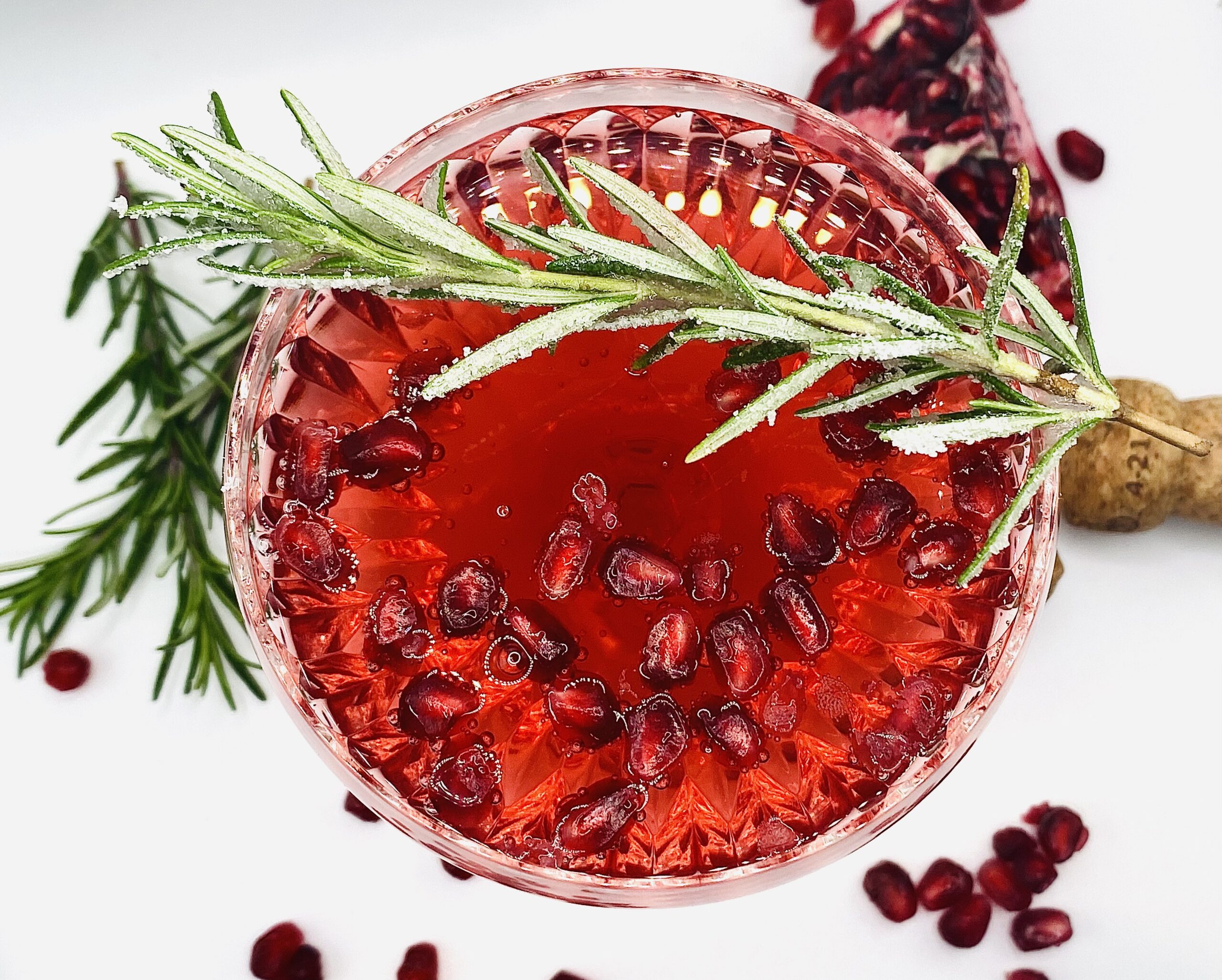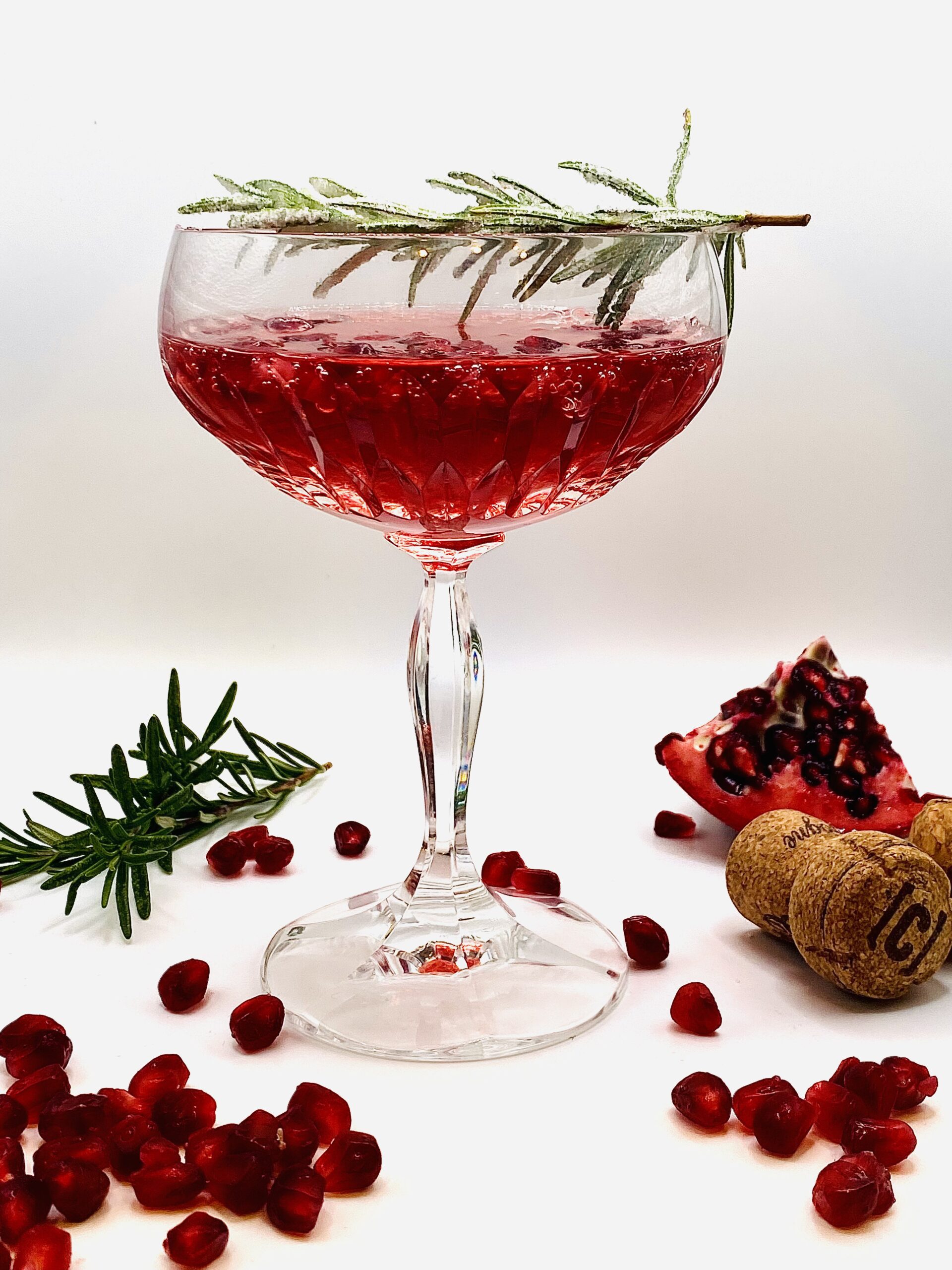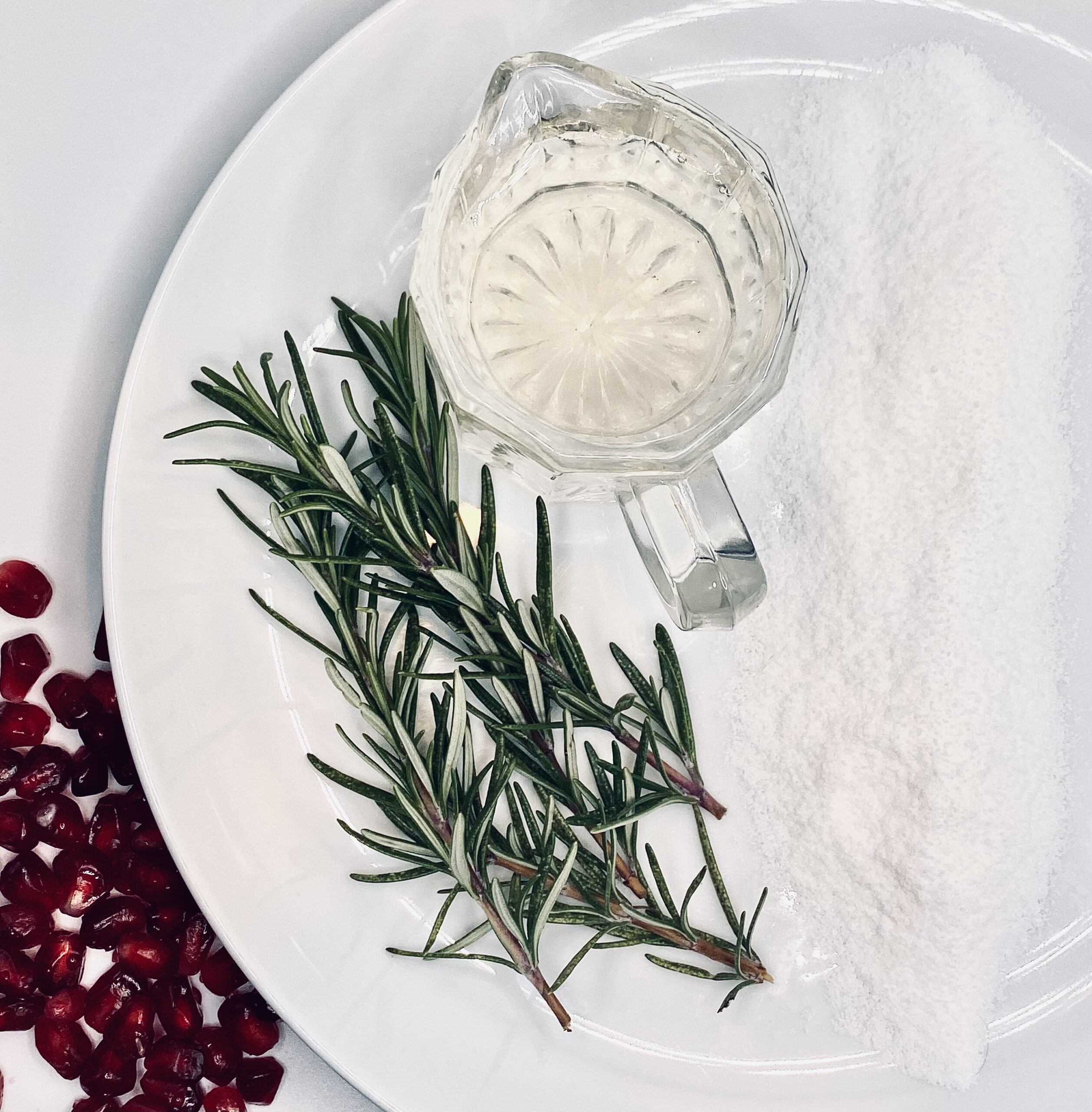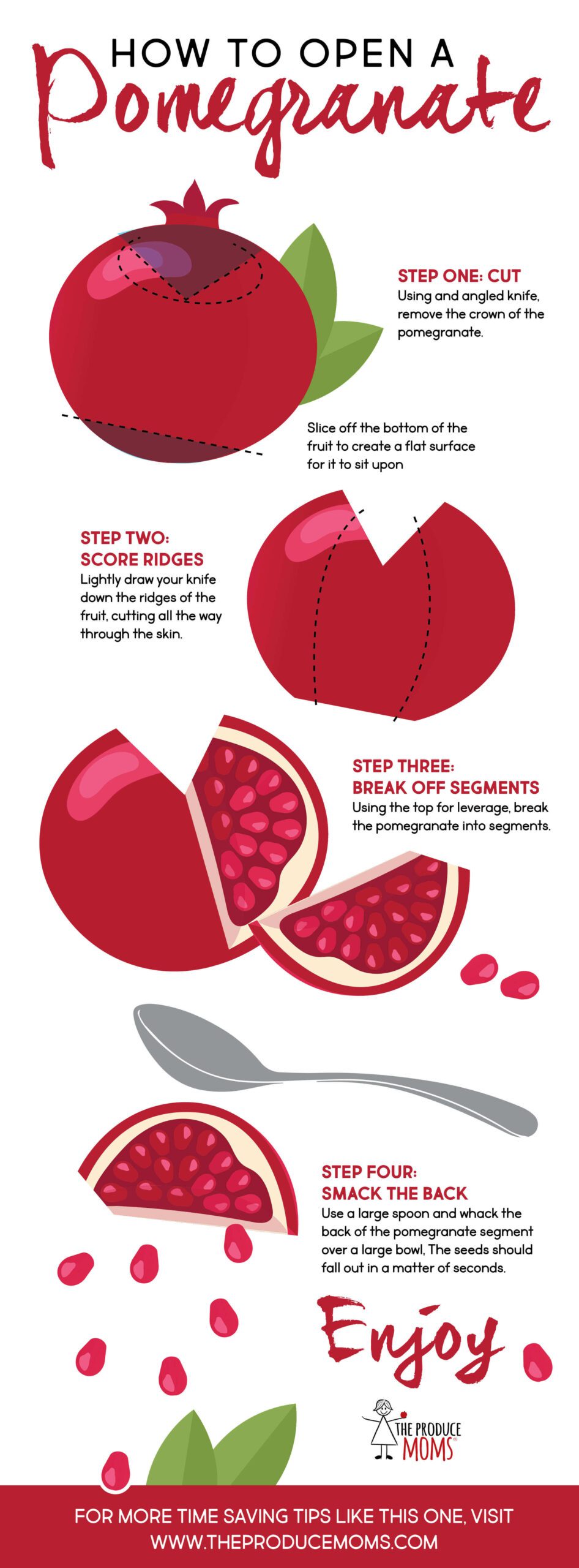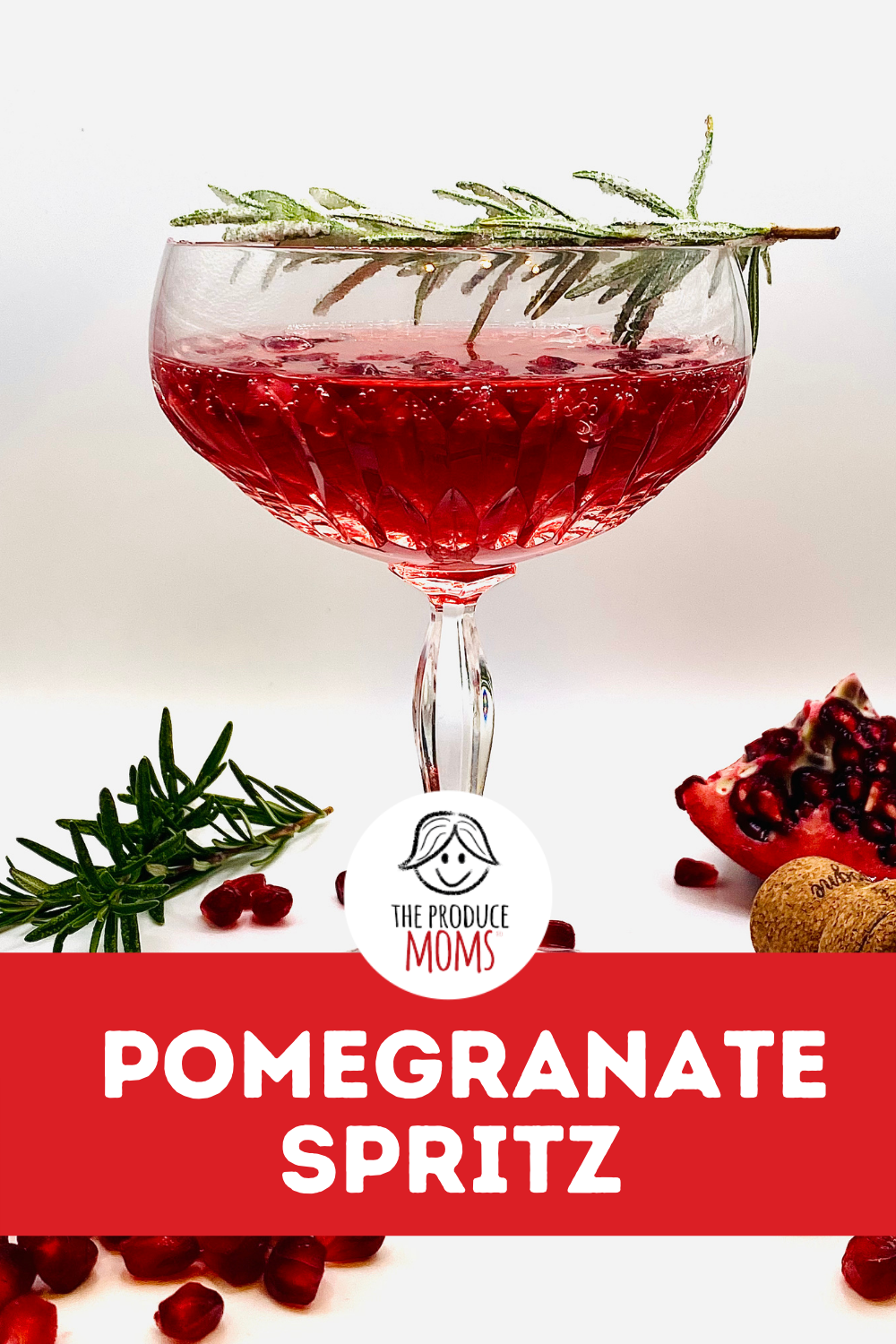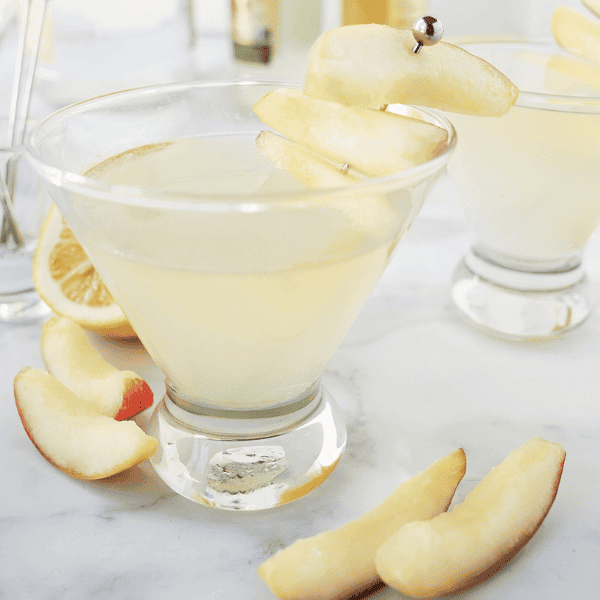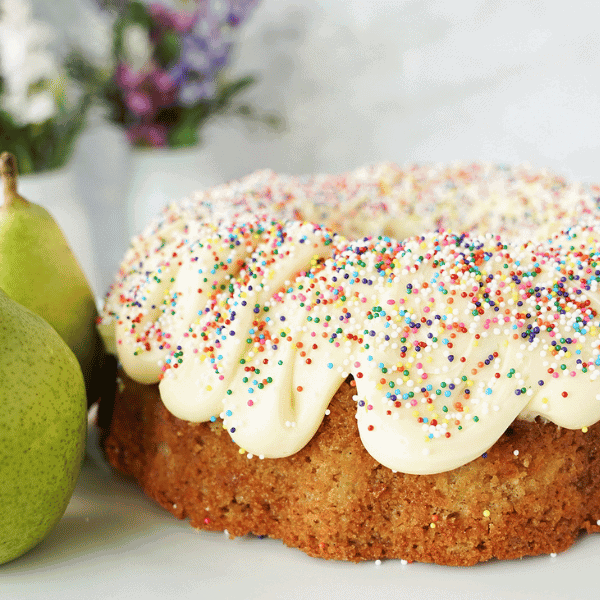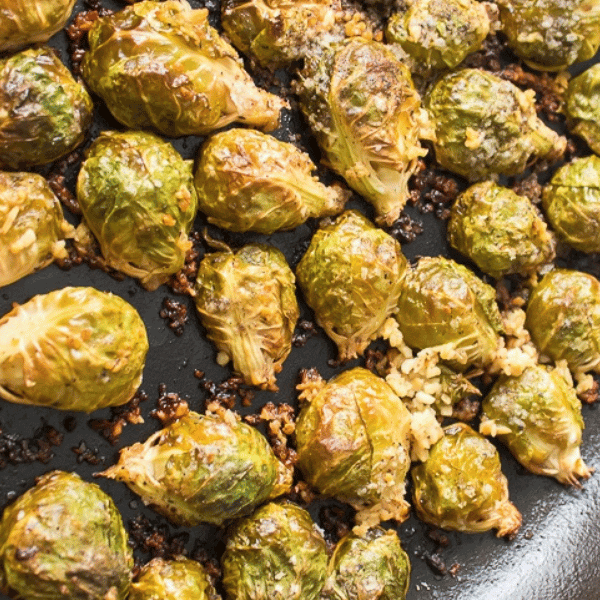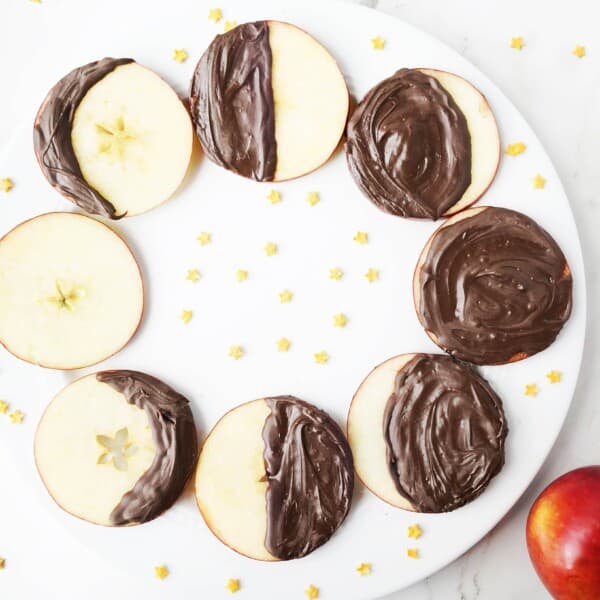Pomegranate Spritz
Dec 30, 2021, Updated Jun 14, 2022
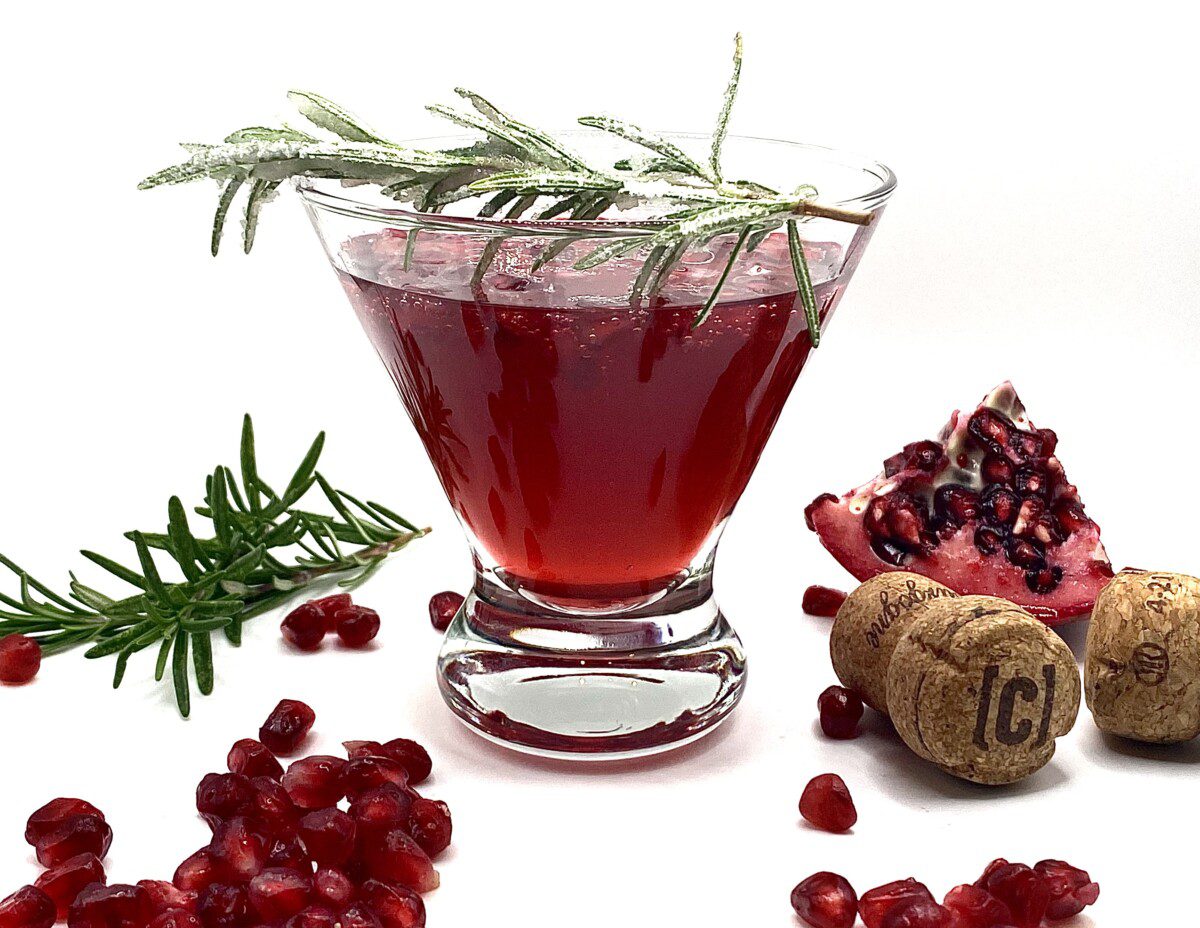
This post may contain affiliate links. Please read our disclosure policy.
As the year draws to a close, we all turn to ways to celebrate the old and ring in the new. Across the globe, people mark the occasion with special food and drink, much of which is produce-centric!
In Spain, it is common to eat 12 grapes (Las Doce Uvas de la Suerte) in rapid succession at the stroke of midnight for prosperity and good luck: one grape for each month in the new year. Just make sure you chew them well!
The wish for wealth in the new year is the most popular food-based tradition, with many cultures eating green and gold-hued foods to symbolize money. In some Asian traditions, oranges and honey are a popular combination. Lentils and black-eyed peas are also common, as they are round like coins. Cabbage and collard greens are often surrogates for dollars. Cornbread is also a food of choice – especially in the American South – due to its golden color. Needless to say, all of these symbols for good luck and wealth make for a very tasty, and veggie-filled, new year’s meal.
Pomegranate Spritz
For this month’s cocktail, I wanted to keep it simple, but provide a way to stay festive without much fuss. The Pomegranate is often used to symbolize fertility, luck, and prosperity. Considered the fruit of life, the Ancient Greeks would smash a pomegranate on New Year’s Day for good luck. This tradition is still practiced by some today to welcome health and wealth in the new year. The rosemary garnish is green to symbolize wealth. I hope this cocktail brings you all a bountiful new year!
Ingredients in A POMEGRANATE SPRITZ
- 1 oz Pomegranate Juice
- 4 oz Cava
- 1 T Pomegranate Arils (the seeds)
- 1 Sugar Dusted Rosemary Sprig
How to Make A Pomegranate Spritz
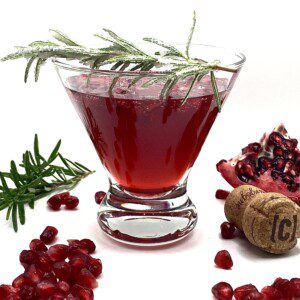
Pomegranate Spritz
Equipment
- Champagne Flute
Ingredients
- 1 oz Pomegranate Juice
- 1 T Pomegranate Arils (the seeds)
- 4 oz Cava
- 1 Sugar Dusted Rosemary Sprig
Instructions
- In a champagne flute or coupe, pour in the pomegranate juice.
- Top with Cava, and stir gently to combine.
- Top with pomegranate arils and a sugared rosemary sprig.
Nutrition
Nutrition information is automatically calculated, so should only be used as an approximation.
Non-Alcoholic Option
For a non-alcoholic version – for those who do not care to drink or want to get an early start on Dry January – opt for non-alcoholic Sparkling Wine, like Noughty AF or a sparkling white grape juice. For even less sugar, try a high-end sparkling water (like Perrier or San Pellegrino) and add in a squeeze of lime for a bit more flavor.
Sugar Coated Rosemary
These could not be simpler or more beautiful garnishes. Rosemary is a very hearty herb that survives in most climates. In the winter, they still offer their aromatic qualities, despite the cold.
Dip one rosemary sprig completely in simple syrup (1:1 sugar:water). With a spoon, sprinkle the sprig with granulated sugar until coated. Allow it o dry on wax or parchment paper. Be sure to make these 20-30 minutes before serving so they may dry.
How to Open a Pomegranate
The Produce Moms already has a great guide to seeding pomegranates, but I wanted to add one more trick I always use to ensure none of the white membranes mix into my seeds. Pomegranates can look daunting, with all of their labyrinthine pockets of seeds and the sheer size. Sure, you can buy pre-packaged pomegranate seeds (also called arils) but those have a larger carbon footprint. I always prefer to snag a pomegranate and dig right in! Plus, it’s a super fun activity for kids – just make sure you wear aprons or dark clothes. That pomegranate juice is no joke!
Once you have opened the pomegranate according to the linked guide, release the seeds into a bowl of water. The water allows the bits of the white membrane to float to the top! You just skim them off with a slotted spoon, fine mesh strainer, or even your fingers. Then strain the water out and you have perfect pomegranate seeds ready to enjoy.
Choosing the Right Sparkling Wine
For many cocktails, a dry sparkling wine is best. In wine speak, “dry” refers to the amount of residual sugar left in the wine (sugar not converted into alcohol) – so the drier the wine, the less sweet it is. For a cocktail, a drier wine will help lift the cocktail and not add too much sugar, yielding a more balanced drink. For this cocktail, I recommend a Cava, Non-Vintage (NV) Champagne, or any wine labeled as “Brut”.
When it comes to interpreting sparkling wine labels (especially Champagne) the vocabulary can be a bit tricky. For example, a common mistake is reading “Extra Dry” and thinking it is not sweet; however, Extra Dry is actually the middle of the sweetness scale for sparkling wines.
Here is a quick rundown of the categories of sparkling wine, from least sweet to sweetest to help you choose your next bottle. This is helpful to match taste preference but it’s also good to know that the sweeter the wine, the more calories per serving. These terms were created for Champagne, but can be used to understand the sugar levels in other types of sparkling wines, especially those made using the Méthode Champenoise/Tradicional (traditional way of making Champagne using a second ferment in the bottle). As a key, g = grams, L = liter, and RS = residual sugars.
- Brut Nature: 0-3 g/L RS
- Extra Brut: 0-6 g/L RS
- Brut: 0-12 g/L RS
- Extra Dry: 12-17 g/L RS
- Dry: 17-32 g/L RS
- Demi-Sec: 32-50 g/L RS
- Doux: >50 g/L RS
I hope this helps you pick out the perfect bubbly to ring in the new year. Cheers to you!
